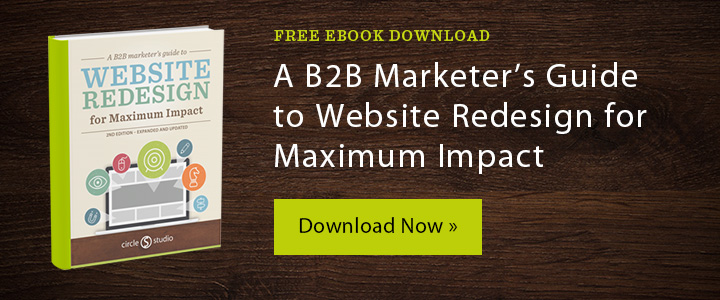A Content-first Approach to Redesigning Your Firm's Website

“Content-first” is a philosophy that leading digital agencies have adopted to guide their clients’ websites in a more efficient direction and to ultimately create a better user experience (UX).
Naturally, a content-first approach recognizes content (messaging, copy, images, video, downloadables, etc.) as the preeminent component of a website. While function and form are also important components of a website, content is ultimately the reason users visit a website. So establishing content as the foundational starting point for the planning, design and development of a user-centric website is absolutely crucial.
The problems with a design-first approach
Humans are visual creatures. Seeing things with our own eyes helps us to understand things, instead of having to conceptualize and use our imaginations. Seeing what your website could look like before having any real content prepared is a nice, satisfying visual, but it’s putting the metaphorical cart before the horse.
Designing a website before determining a firm’s essential content is a misstep that can offset strategy and waste both time and money.
As described by Rian van der Merwe, “If we design before we have content, we effectively create the packaging before we know what’s going to go in it. And if the content doesn’t fit the package, there are only two options: start from scratch, or try to jam the content into the existing package.”
Instead of forcing content into a beautiful design, the beautiful design should be created around the actual content to highlight the most important information in a meaningful and user-friendly way.
Design-first also sets a website up to fall short on delivering a great user experience. Content should be easy to find and engaging. If the content has to be crammed into a design, you’ll likely have to sacrifice key UX principles to make it all fit together.
The need for content strategy
A solid content strategy that defines how you will meet your target audience’s needs and achieve your marketing goals is a critical building block of your website. Content is the magnet of your website and a content strategy will guide your plans for the who (audience), what (topics) and where (site architecture) of content creation.
It also helps to establish a hierarchy for your content and understand what content is most important to least important for each page on your website. At the onset of your website redesign project — before any design or development is started — a content strategy for your website should be developed.
Organizing your website content
As with many tasks, planning and preparation is an essential task that will guide the rest of the site building process. Once you’ve established the content strategy, you’ll then want to spend some time brainstorming, prioritizing, paring down and mapping out content to user goals.
Information Architecture (IA) is the exercise of organizing, structuring, and labeling the content and navigation of your website in a way that is intuitive and logical to visitors. A crucial tool for IA is a sitemap, which provides a blueprint for the website, showing primary, secondary and tertiary pages, as well as different types of content that could exist and in what order.
Sitemaps make it easy to visualize the content hierarchy and to add, edit or remove areas. Once a good outline is agreed upon, it becomes easier to develop or edit content for the new hierarchy.
Content and design working hand-in-hand
For a long time, clients have seen a page’s design before actually generating the actual content for that page, so jumping into content development can be a daunting task without that visual, motivational boost. For the content-first approach to work, clients will have to prioritize thinking about content at the very beginning of the website redesign process and will need to rely on their agency partner to guide them through the process.
Just remember, a website can technically exist and be successful with no real design at all, as long as the content is helpful and provides value to the user (e.g. Wikipedia and Craigslist). However, truly powerful websites have a balance of quality content, intuitive navigation and beautiful, engaging design.
Design around the content
The purpose of a website’s design is to present the content in a meaningful way, convey the brand, and set up an engaging visual environment.
Traditionally, designers were forced to come up with ways to display content that doesn’t exist yet, or that could change drastically once the website was developed. Which meant that the design would have likely looked very different if the designer had a better understanding of the page’s content earlier in the process.
However, because today’s users digest content very quickly from a variety of devices, modern web design requires form to follow function and design to follow content — not the other way around.
Place the proper emphasis on content upfront
As tempting as it may be to start first with design and figure out the content later, content should always be a priority. It starts with developing a content strategy, but it also requires creating client-focused, compelling content that will provide your target audience the information they seek and the answers to their questions at each stage of the client journey.
While design and development are obviously essential to the success of your website redesign, strategy and content should be where both you and your web design partner start. The content-first approach will not only help you better serve your audience’s needs, it will also provide a design that creates a more positive user experience that will impact usability, navigation, engagement and ultimately conversion.
By signing up you are agreeing to our Privacy Policy.
